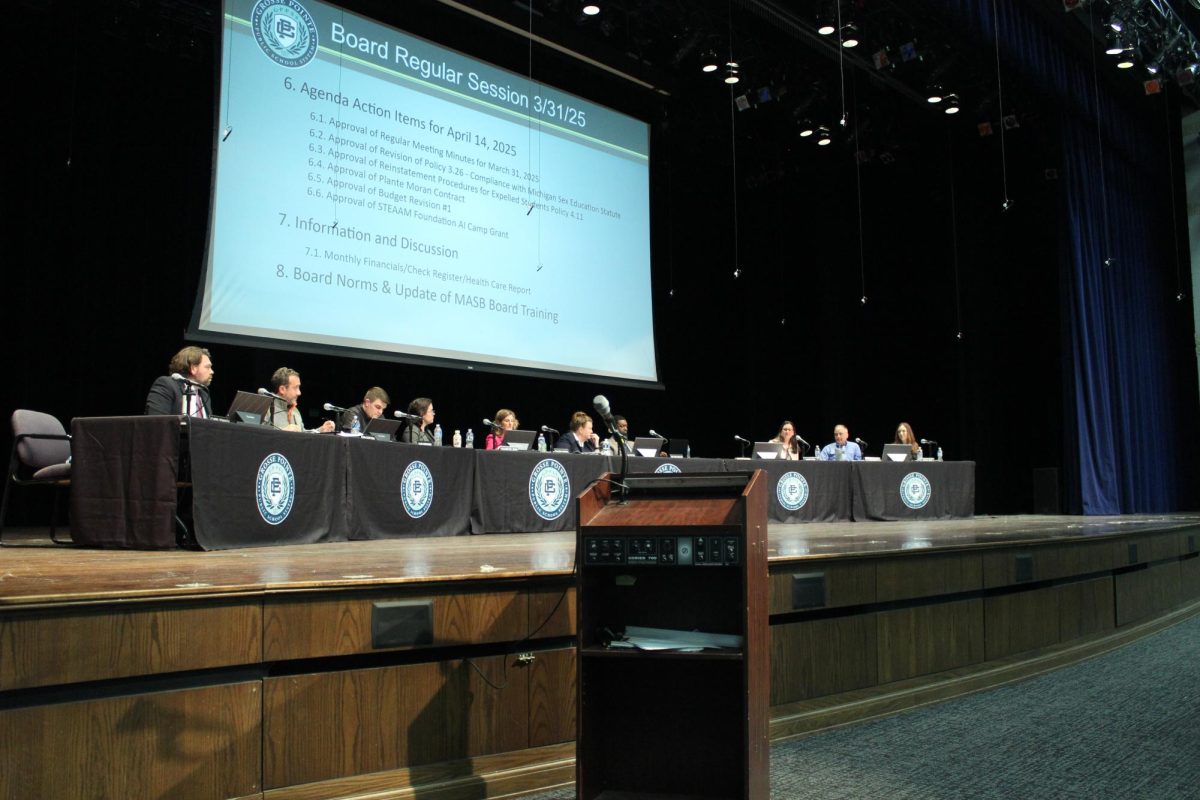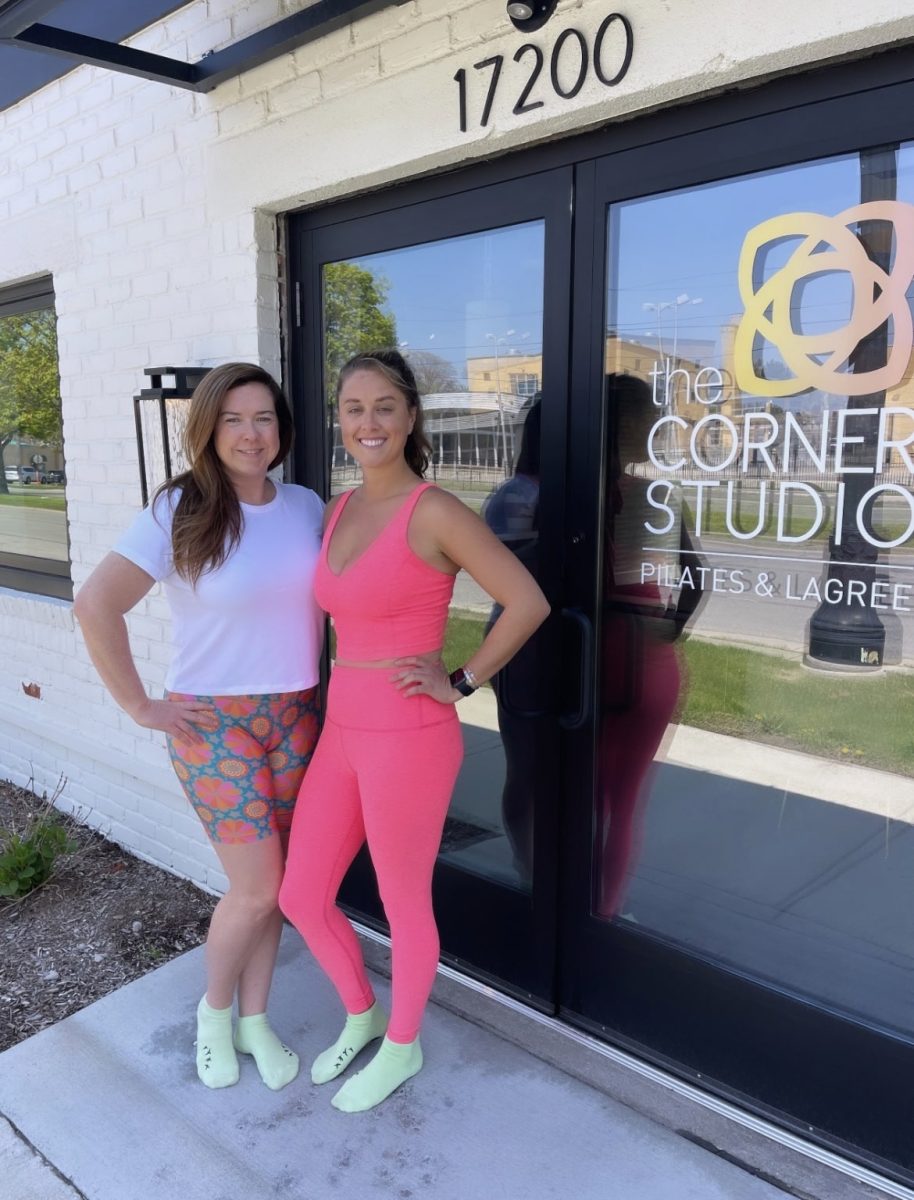By Elena Rauch ‘18 | Staff Writer
Starting this spring, new drills relating to active shooters will be run in coordination with local law enforcement. In fact, according to multiple administrative sources, precautions against active shooters are already being prepared, and an emergency plan is in place, however, no one interviewed would give details about the plan, saying it was necessary to keep them secretive and therefore effective.
“Dr. Niehaus’ arrival to Grosse Pointe South this year has brought a renewed focus on school safety,” Principal Moussa Hamka said. “In his previous district, they had an unfortunate incident where there was an active shooter, so he brings a different lens of perspective to our community.”
Since Niehaus’ arrival, Assistant Principal Steven Wolfe has attended ALICE active shooter training courses. In addition, Hamka, Wolf and Assistant Principal Terry Flint have worked with a third party security consulting firm along with the district to revamp and revise the school’s security plans.
“In the spring, we are going to be participating in a new kind of active shooter drill, possibly,” Hamka said. “Mr. Flint is in charge of coordinating that, and so before that happens, one of the big pieces that we have to do is message. Message to families and message to students.”
In addition, over the summer, the local SWAT team used South to train during the day, Hamka said.
“I was here the day that they were, and it was interesting because there were, I’m gonna guess, 8-10 police vehicles, at least 15+ police officers, some from Grosse Pointe and some from other local areas who came and used our facility to do training specific to what you’re talking about,” Flint said.
Hamka also said additional security measures are being instilled to increase safety within South. All the doors operate on an electronic locking system that locks after the bell rings in the morning. Also, people entering the building during the school day have to sign in with a hall monitor by the Fisher entrance, Hamka said.
“That was to limit the number of access points to the building. So while we don’t have a safe and secure entrance, we do now have one entrance that is covered by an adult,” Hamka said. “Also, you have to buzz now to get in. You buzz, you appear on camera, and you are invited into the building.”
Hamka said learning can’t take place if students don’t feel safe, but he thinks people enjoy the free atmosphere around South, such as off-campus lunches. The trick is to balance the two, he said.
Also, Flint said school safety doesn’t rely completely on security measures.
“All of us have a piece of responsibility in trying to make our school safe, which is drop the whole fear thing,” Flint said. “If we suspect something or we have a concern about something, kids need to feel that they can report it.”
All students and staff have a shared responsibility in keeping the school safe too, Hamka said. For example, when a student props a door open, there’s now a vulnerable access point for the whole building, he said.
“We’ve asked everyone, when you leave the building you have to come back in through the Fisher door,” Hamka said. “They don’t realize that by leaving that door open, all the safety measures, all the locks on the doors, everything we do – right there, that one act, undoes all those measures. We have to help students understand that everything they do matters.”
Hamka and Wolf agree that one of the most crucial things a student can do if they have a suspicion is report it.
“I think one of the things we all have to do is if there’s something suspicious, something we overhear that is troubling or that could be problematic, is to report it to the proper people, and let them investigate it,” Hamka said. “If it wasn’t serious, let them come to that determination.”
There are a lot of safe spaces to report things like this, Hamka said. The administrative staff, the counseling department and teachers are good places to report a concern, he said. Another resource for students who want to report tips about school security or safety is OK2SAY, an online reporting portal where students can anonymously report tips that will be investigated and followed up on.
“We’ve already had (a tip) happen this school year, where one of the students sent an anonymous tip out. It came all the way back around. The state police called my phone in my office,” Flint said.
Hamka said details could not be given, but the tip was investigated. Also, the administrative staff wants more students to be aware of OK2SAY.
The link to the OK2SAY website is http://www.michigan.gov/ok2say–. Students can also call 8-555-OK2SAY, text 652729, or email OK2SAY@mi.gov if they have any concerns.










































































